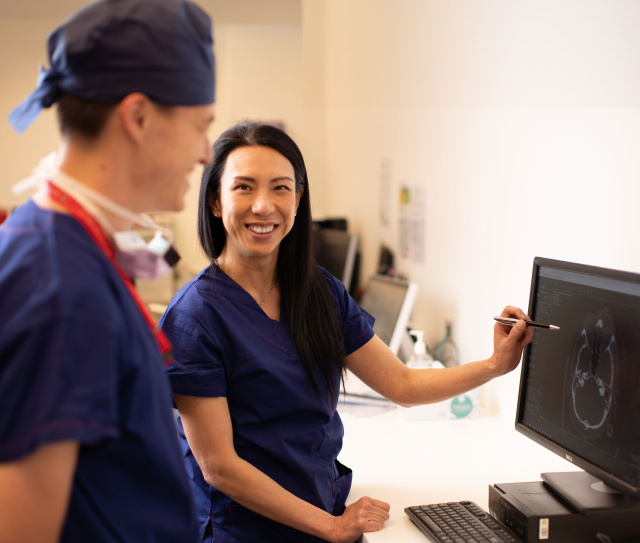Parotid tumours
The parotid glands are large salivary glands located just in front of the ears. There is one parotid gland on each side of the face. A parotid tumour is an abnormal growth of cells within a parotid gland.

Types of parotid tumours
Most parotid tumours are benign (non-cancerous). Benign tumours include:
- pleomorphic adenoma (most common)
- Warthin’s tumour (occurs commonly in older men who smoke)
- oncocytoma and other rare tumours.
Some parotid gland tumours are malignant (cancerous). This is especially true in Australia due to our high rates of skin cancer, which can spread from the face to lymph nodes around and within the parotid gland.
Malignant tumours include:
- metastasis from skin cancers
- high and low grade mucoepidermoid carcinoma
- salivary duct carcinoma
- squamous cell carcinoma
- acinic cell carcinoma
- adenoid cystic carcinoma.
How are parotid tumours treated?
Parotid tumours are diagnosed following an ultrasound-guided fine needle aspiration (FNA) in which cells are removed for testing. Imaging, such as an MRI or CT scan may be used to check the size of the tumour and whether it has spread to nearby tissue or lymph nodes in the neck.
Surgery (called a parotidectomy) is the standard treatment for most parotid tumours. It involves removal of part or whole of the parotid gland.
The facial nerve (the nerve responsible for frowning, eye closure, nose wrinkling, smiling, and lip movement) passes through the middle of the parotid gland. During surgery, this nerve needs to be protected so that surgery does not cause weakness in the facial muscles. In a small minority of patients this is impossible due to the location or size of the tumour.
For cancerous parotid tumours, radiotherapy may be used following surgery to decrease the risk of the cancer coming back. Immunotherapy or targeted therapy may have a role in advanced parotid cancer that cannot be removed with surgery.
Parotidectomy is one of Dr Ch'ng's most request procedures. She carries out parotidectomy using nerve integrity monitoring (NIM) – a device that allows her to monitor the function of the facial nerve during surgery.
If a parotid tumour is small and non-cancerous, Dr Ch’ng might be able to perform the surgery through a mini-face lift incision. She can also correct any contour deformity in the cheek or upper neck following removal of the tumour with fat transferred from another part of the body (this is called dermofat or a fat graft). The scar will be inconspicuous.
A small drain is usually inserted into the wound to drain body fluid and blood from the wound site. The drain is usually removed before you are discharged from hospital. You will remain in hospital for 2 nights.
Get in touch
If you’d like to know more about our head and neck, plastic or skin cancer surgical services, or if you have a question for Dr Ch’ng, we’d love to hear from you.
